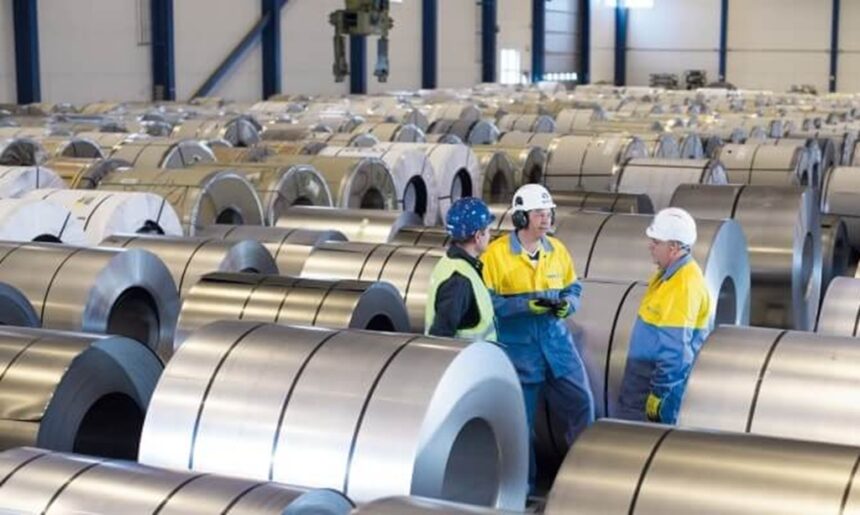In the modern world of architecture, engineering, and industrial design, few materials have stood the test of time quite like stainless steel. From sleek kitchen appliances to towering skyscrapers, from surgical instruments to public art installations, stainless steel plays a silent yet critical role in shaping our everyday environment.
Why has this metal become such a cornerstone in both functional and decorative applications? The answer lies in its unmatched combination of strength, corrosion resistance, aesthetic appeal, and sustainability. As demands for performance materials increase across sectors, stainless steel continues to lead the pack, not just for what it is, but for what it makes possible.
What Makes Stainless Steel So Special?
Stainless steel isn’t just a shiny metal—it’s an alloy that contains a minimum of 10.5% chromium, which gives it a unique ability to resist rust and staining. This chromium content forms a thin passive layer on the steel’s surface that protects it from oxidation. That corrosion resistance is what makes corrosion resistance apart from traditional carbon steel or other metals.
Depending on the intended application, stainless steel can also include other elements like nickel, molybdenum, or titanium to enhance its properties. These tweaks make it adaptable to extreme temperatures, highly acidic environments, or situations requiring significant strength and durability.
In industries where both hygiene and aesthetics matter—like food processing, healthcare, or luxury design—stainless steel has become irreplaceable.
Everyday and Extraordinary Uses of Stainless Steel
From the moment we wake up, stainless steel surrounds us more than we often realise. It’s in our bathrooms, our kitchens, our transportation systems, and our workplaces. Some of the most common (and some lesser-known) uses include:
- Kitchenware and Appliances: Ovens, sinks, refrigerators, and countertops benefit from its clean look and resistance to bacteria and stains.
- Architecture and Construction: Handrails, façades, bridges, and structural supports rely on stainless steel for both form and function.
- Medical Instruments: Its easy-to-clean surface and biocompatibility make it ideal for surgical tools and hospital equipment.
- Transportation: Car trims, exhaust systems, trains, and even aircraft components use stainless steel for its strength-to-weight ratio and corrosion resistance.
- Public Infrastructure: Sculptures, benches, bollards, and cladding use stainless steel to withstand weather while maintaining visual appeal.
The beauty of stainless steel is that it’s as much about performance as it is about presence. It’s rugged enough for industrial applications and elegant enough for high-end design.
The Environmental Edge
One of the most forward-thinking benefits of stainless steel is its sustainability. It is 100% recyclable, and in fact, most new stainless steel products are made from recycled material. Unlike plastics or composites that degrade with recycling, stainless steel retains its quality and strength indefinitely.
This recyclability contributes to a lower environmental impact and makes stainless steel a smart material in green building practices and eco-conscious manufacturing. It doesn’t emit toxins, and its long lifespan means less frequent replacement and lower consumption of resources over time.
Grades and Finishes: More Than Meets the Eye
Not all stainless steel is created equal. There are several grades, each engineered for different challenges:
- Austenitic Stainless Steel: Non-magnetic, high corrosion resistance, ideal for kitchens, tanks, and chemical plants.
- Ferritic Stainless Steel: Less ductile but good for decorative features and low-stress environments.
- Martensitic Stainless Steel: High strength and hardness, used in cutlery and surgical instruments.
- Duplex Stainless Steel: A mix of austenitic and ferritic structures for extra strength and stress corrosion resistance.
Additionally, stainless steel comes in a variety of finishes—brushed, mirrored, matte, and textured—each offering a different visual and tactile experience. These finishes influence not only the aesthetics but also the surface’s ability to resist fingerprints, scratches, or graffiti.
Why Expertise Matters
While stainless steel may seem straightforward, working with it isn’t always simple. Choosing the right grade, finish, and fabrication method is crucial to getting the best performance and longevity from the material. Poor selection or handling can lead to unnecessary corrosion, structural weakness, or surface flaws.
That’s why having an expert like Topson involved in your stainless steel project—whether it’s architectural, industrial, or artistic—is so valuable. A professional with deep knowledge of stainless steel understands its strengths, limitations, and how to best harness its capabilities for specific applications. This kind of guidance can save time, reduce costs, and enhance the final outcome, especially on large, technically demanding projects.
Future-Proofing with Stainless Steel
As global industries shift toward sustainability, durability, and low-maintenance design, stainless steel is emerging as more relevant than ever. With increasing interest in modular construction, smart infrastructure, and renewable energy, stainless steel’s adaptability makes it a foundational material for the future.
As trends move toward minimalism and longevity, stainless steel is finding new applications in areas like solar panel supports, electric vehicle components, and even 3D-printed architecture.
Final Thoughts
Stainless steel is more than just a durable material—it’s a versatile, sustainable, and elegant solution for a wide range of industries. Its strength lies not only in its composition but in the thoughtfulness behind how it’s selected, shaped, and used. When handled by experienced professionals, stainless steel transforms from raw alloy to a statement of strength and style.
Whether you’re an architect, designer, engineer, or manufacturer, stainless steel offers the performance and reliability to turn ideas into lasting reality. Its ability to stand up to time, weather, and wear while maintaining a sleek, clean aesthetic makes it one of the most enduring materials of our era—and likely, many more to come.
Related News:
U.S. Steel Hits 52-Week High as Trump Requests Nippon Steel Bid Security Review.














